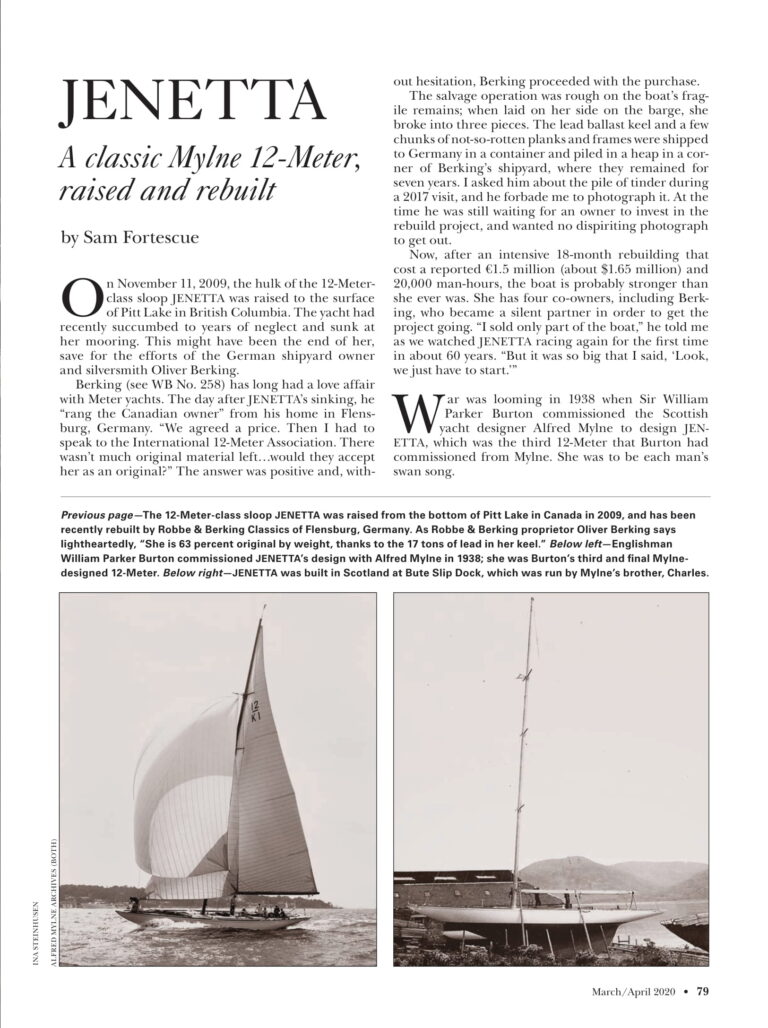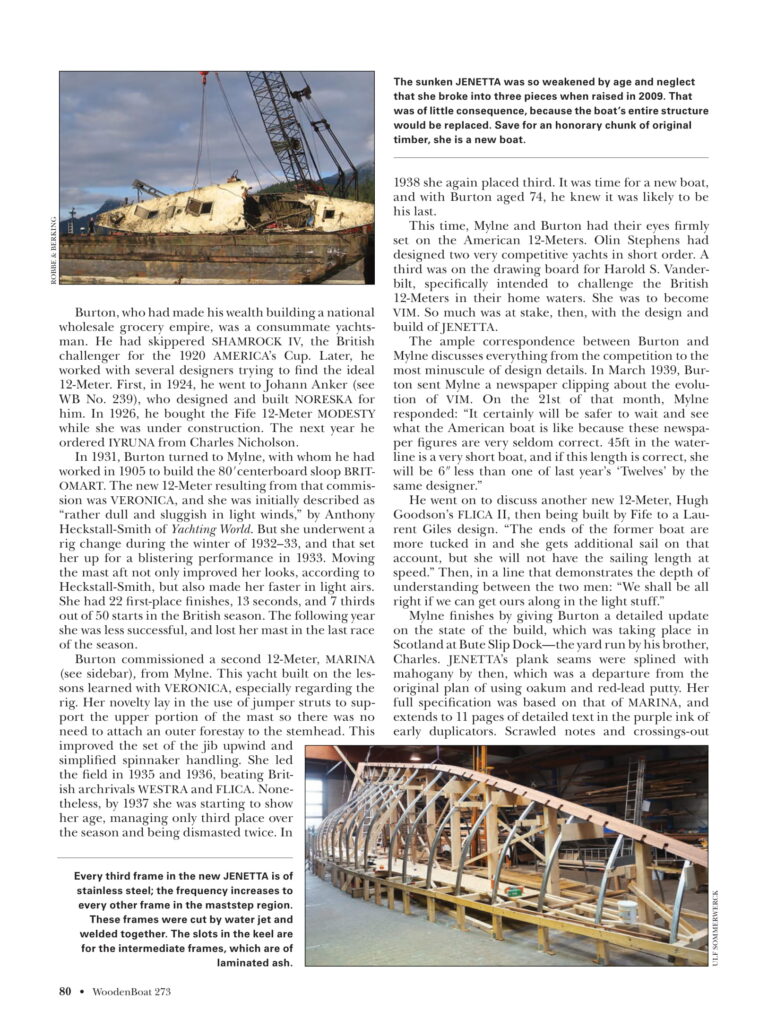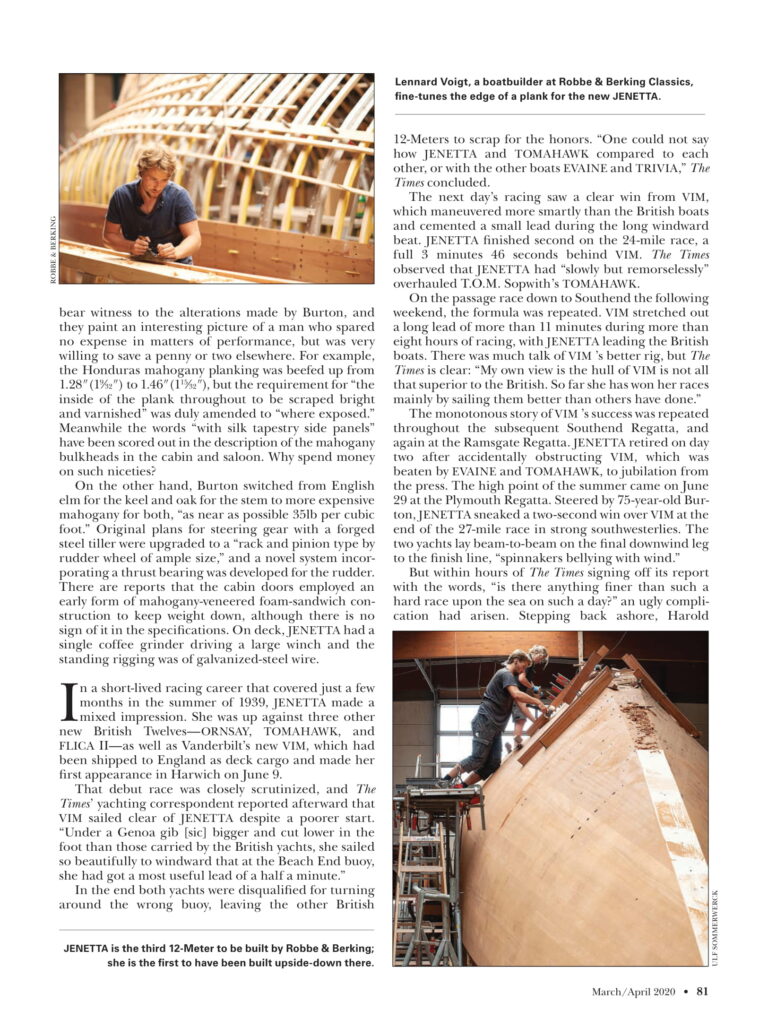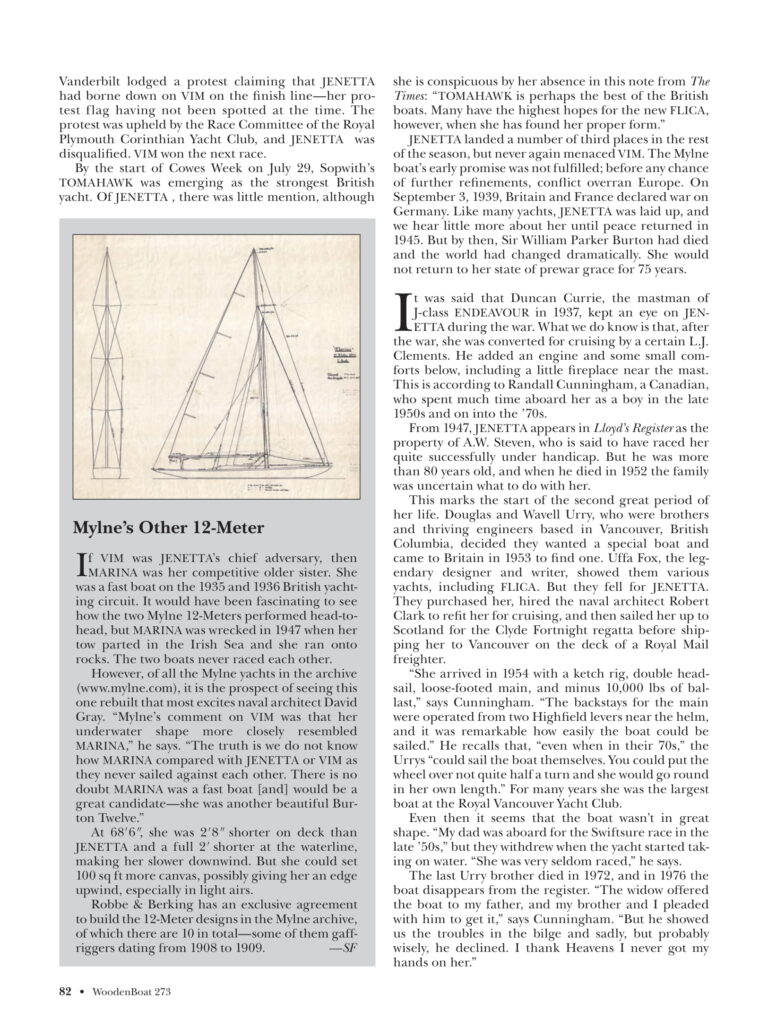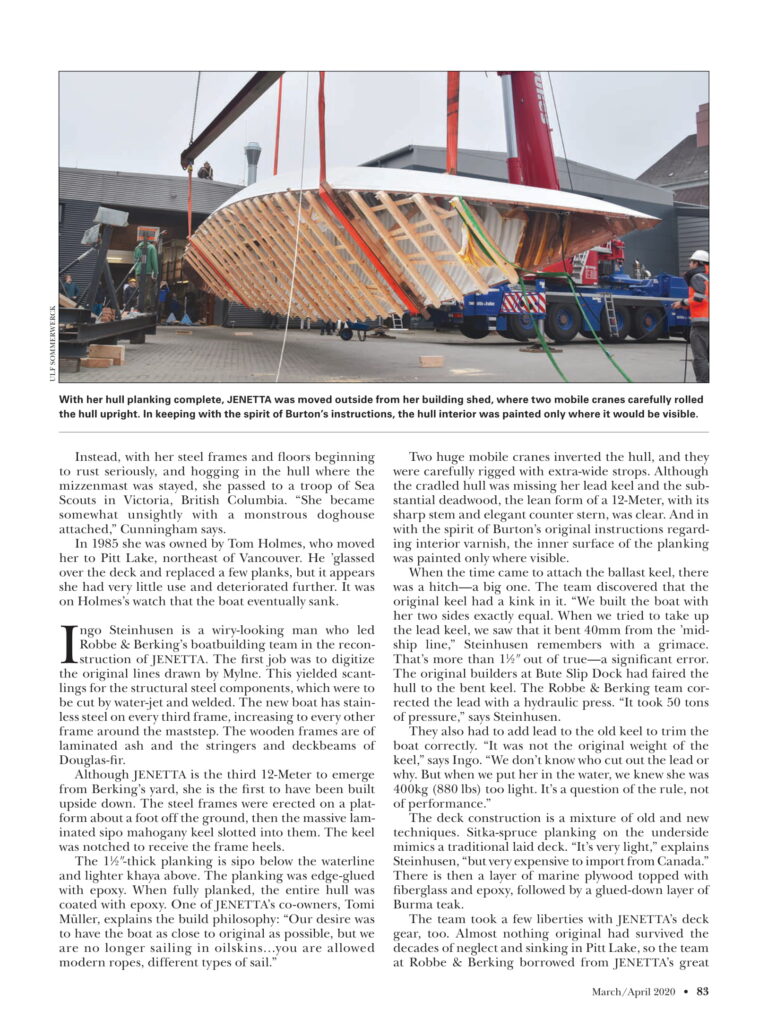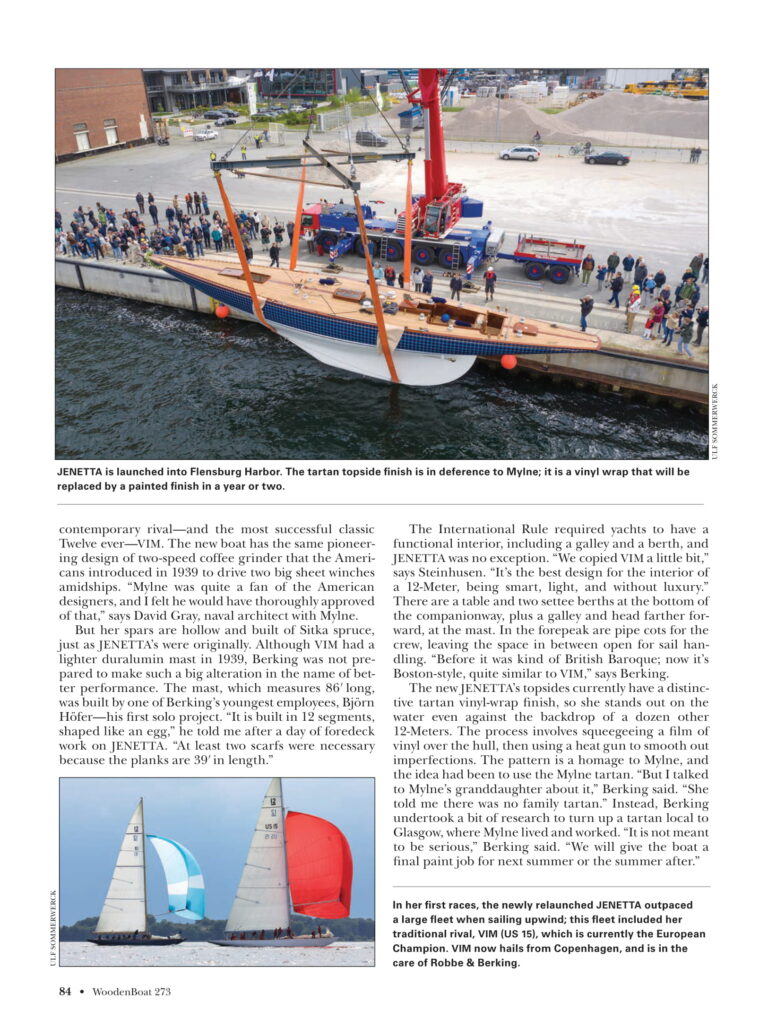When the time came to attach the ballast keel, there was a hitch—a big one. The team discovered that the original keel had a kink in it. “We built the boat with her two sides exactly equal. When we tried to take up the lead keel, we saw that it bent 40mm from the ’midship line,” Steinhusen remembers with a grimace. That’s more than 11 ⁄2″ out of true—a significant error.
The original builders at Bute Slip Dock had faired the hull to the bent keel. The Robbe & Berking team corrected the lead with a hydraulic press. “It took 50 tons of pressure,” says Steinhusen.
They also had to add lead to the old keel to trim the boat correctly. “It was not the original weight of the keel,” says Ingo. “We don’t know who cut out the lead or why. But when we put her in the water, we knew she was 400kg (880 lbs) too light. It’s a question of the rule, not of performance.”
The deck construction is a mixture of old and new techniques. Sitka-spruce planking on the underside mimics a traditional laid deck. “It’s very light,” explains Steinhusen, “but very expensive to import from Canada.” There is then a layer of marine plywood topped with fiberglass and epoxy, followed by a glued-down layer of Burma teak.
The team took a few liberties with JENETTA’s deck gear, too. Almost nothing original had survived the decades of neglect and sinking in Pitt Lake, so the team at Robbe & Berking borrowed from JENETTA’s great contemporary rival—and the most successful classic Twelve ever—VIM.
The new boat has the same pioneering design of a two-speed coffee grinder that the Americans introduced in 1939 to drive two big sheet winches amidships. “Mylne was quite a fan of the American designers, and I felt he would have thoroughly approved of that,” says David Gray, a naval architect with Mylne.
Full article, with compliments to the author





